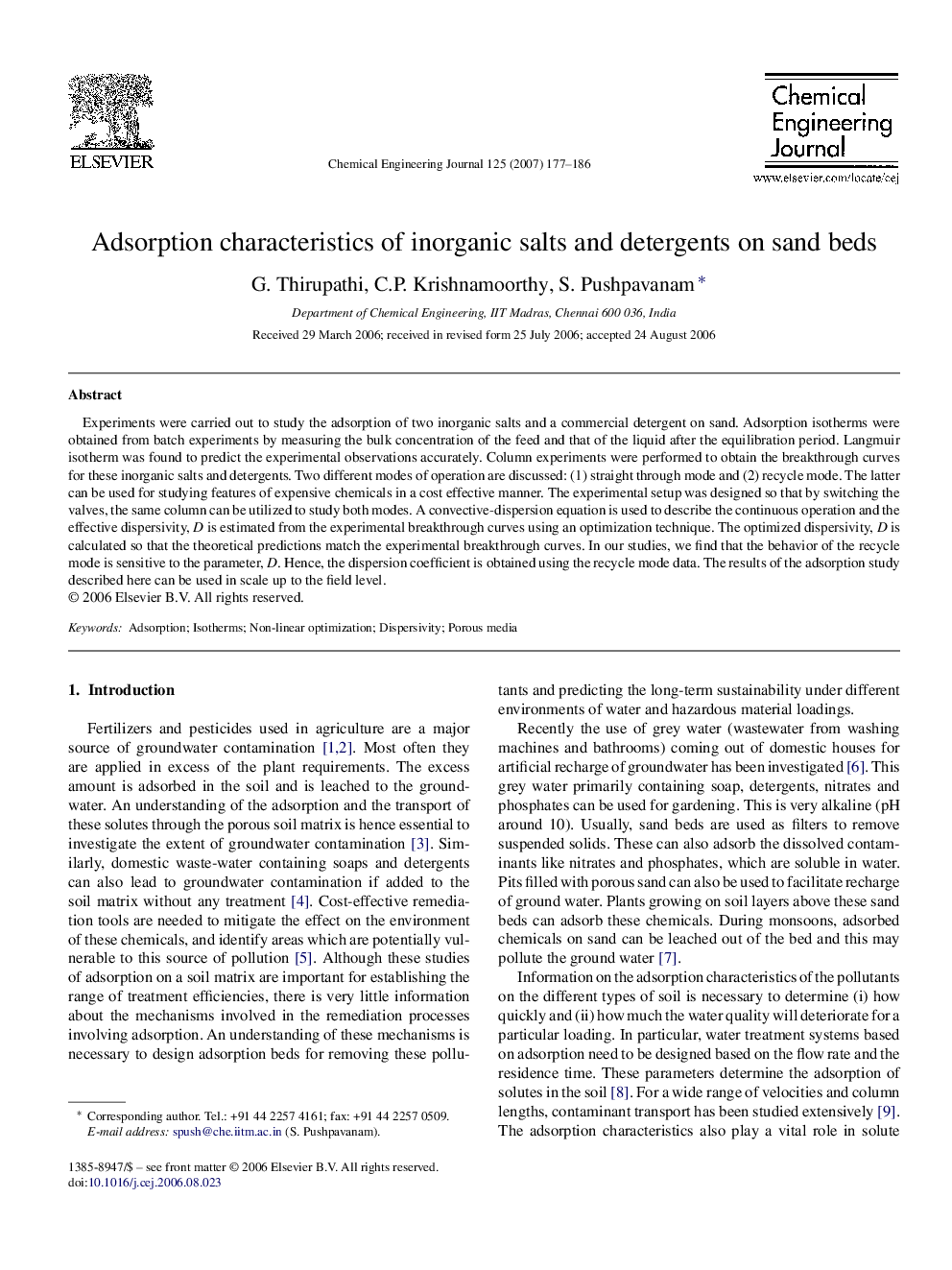| Article ID | Journal | Published Year | Pages | File Type |
|---|---|---|---|---|
| 154035 | Chemical Engineering Journal | 2007 | 10 Pages |
Experiments were carried out to study the adsorption of two inorganic salts and a commercial detergent on sand. Adsorption isotherms were obtained from batch experiments by measuring the bulk concentration of the feed and that of the liquid after the equilibration period. Langmuir isotherm was found to predict the experimental observations accurately. Column experiments were performed to obtain the breakthrough curves for these inorganic salts and detergents. Two different modes of operation are discussed: (1) straight through mode and (2) recycle mode. The latter can be used for studying features of expensive chemicals in a cost effective manner. The experimental setup was designed so that by switching the valves, the same column can be utilized to study both modes. A convective-dispersion equation is used to describe the continuous operation and the effective dispersivity, D is estimated from the experimental breakthrough curves using an optimization technique. The optimized dispersivity, D is calculated so that the theoretical predictions match the experimental breakthrough curves. In our studies, we find that the behavior of the recycle mode is sensitive to the parameter, D. Hence, the dispersion coefficient is obtained using the recycle mode data. The results of the adsorption study described here can be used in scale up to the field level.
